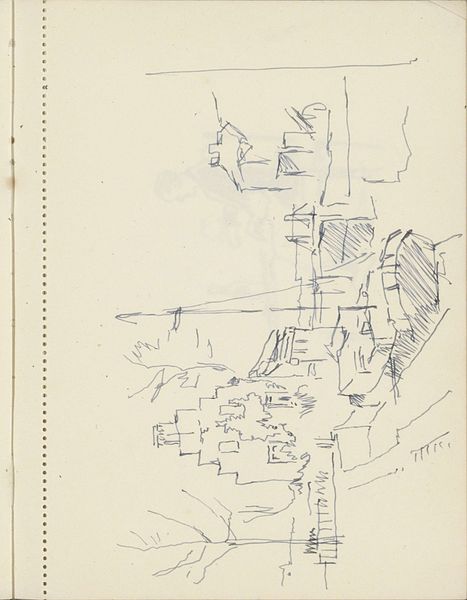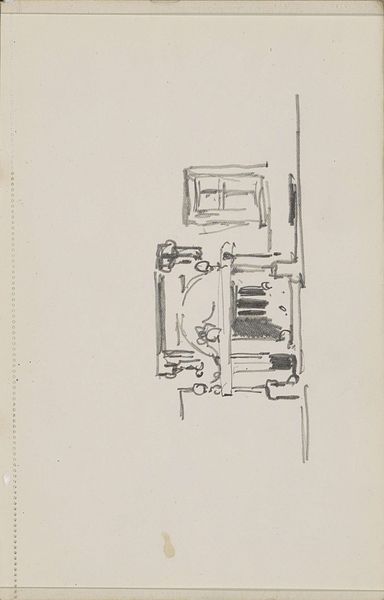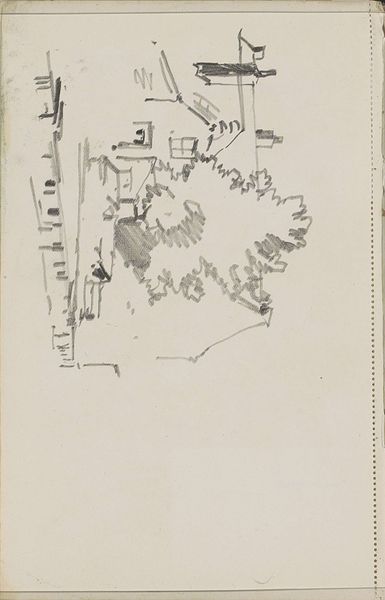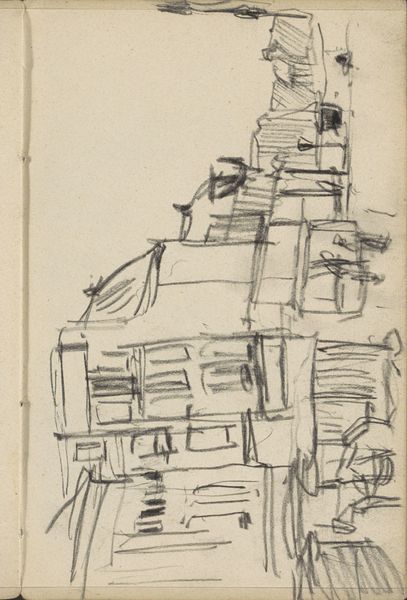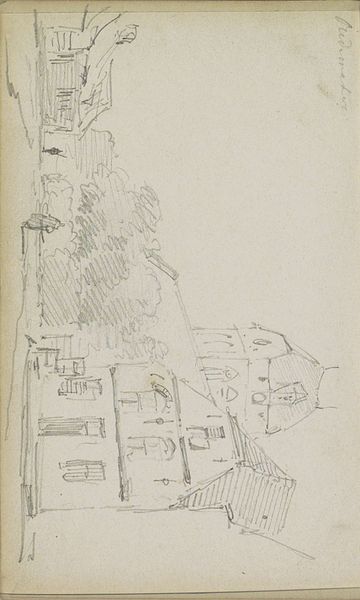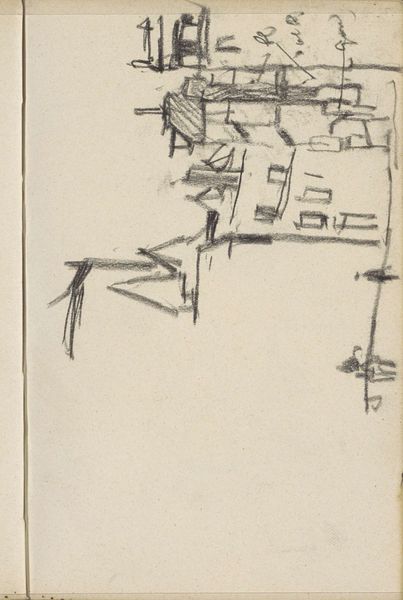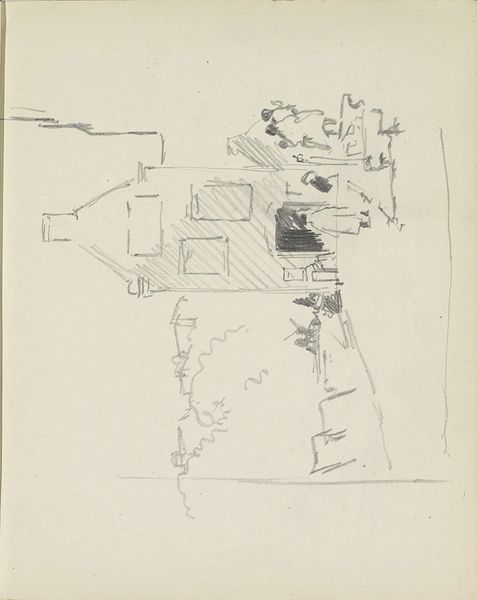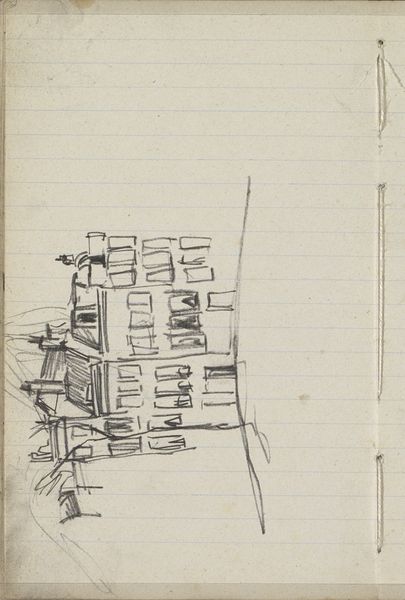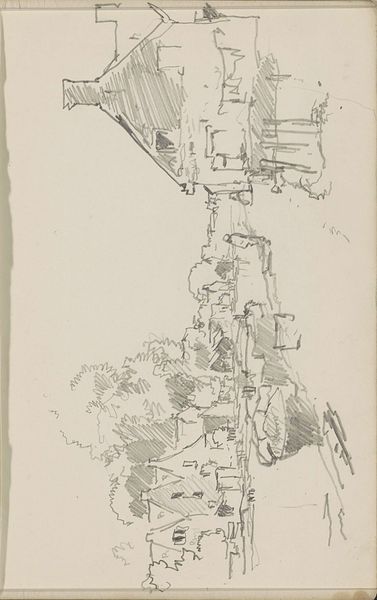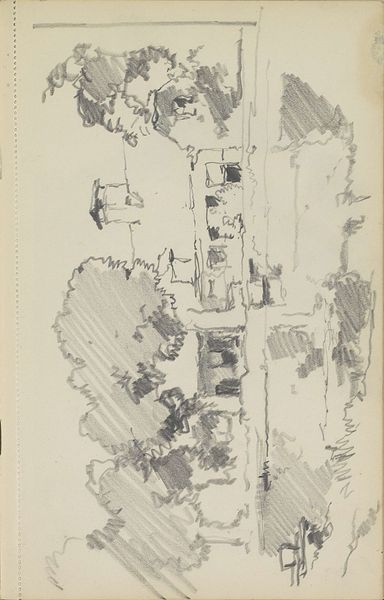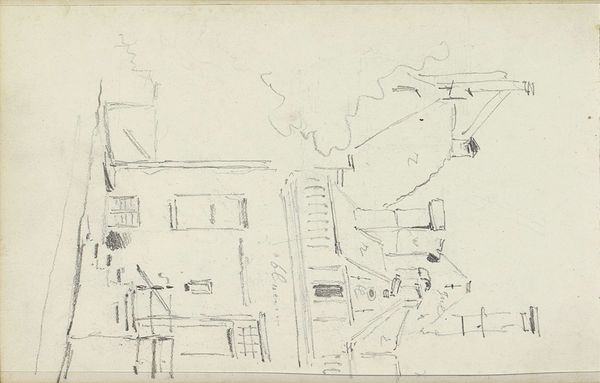
drawing, paper, ink
#
drawing
#
paper
#
ink
#
cityscape
#
street
Copyright: Rijks Museum: Open Domain
Editor: Here we have Cornelis Vreedenburgh’s "Facades of Buildings in a Street," a cityscape rendered in ink on paper, placing its creation somewhere between 1890 and 1946. I’m struck by its simplicity; the bare minimum to capture the scene, yet recognizable. What are your initial thoughts on this piece? Curator: The immediacy of the ink drawing is paramount. Think about the materiality here: the readily available ink, the cheap paper. This wasn’t meant as high art necessarily, but a record, a study. What kind of labor went into constructing these facades? What materials were available? Was this mass production? How does the drawing itself reflect a rapid, possibly industrialized mode of production in its own making? Editor: That's fascinating. So you're saying the drawing itself, the act of quickly sketching, mirrors the possible speed and accessibility of the building materials used for the facades? Curator: Precisely. Look at the repetitive nature of the windows and doorways. The drawing hints at standardization, both in the real-world architecture and in the artist's quick, repetitive strokes. What statement does it make, by its production, about the possible mass consumption and the changing nature of urban living during that period? Editor: It’s almost as if the drawing anticipates architectural photography. Quick, reproducible… it gets the point across efficiently. Did Vreedenburgh produce many of these? Curator: He did, and that’s telling in itself. It speaks to the accessibility of the materials – ink, paper - to the burgeoning artist and the expanding market for affordable art or records. Think about the social implications: who could afford these drawings? Who inhabited these buildings? Editor: I hadn’t considered the drawing itself as a product of its time. It reframes how I see not just the cityscape depicted but also the context surrounding its creation. Curator: Exactly. It reminds us that art doesn't exist in a vacuum. Every line, every material, tells a story about the broader social and economic forces at play.
Comments
No comments
Be the first to comment and join the conversation on the ultimate creative platform.
